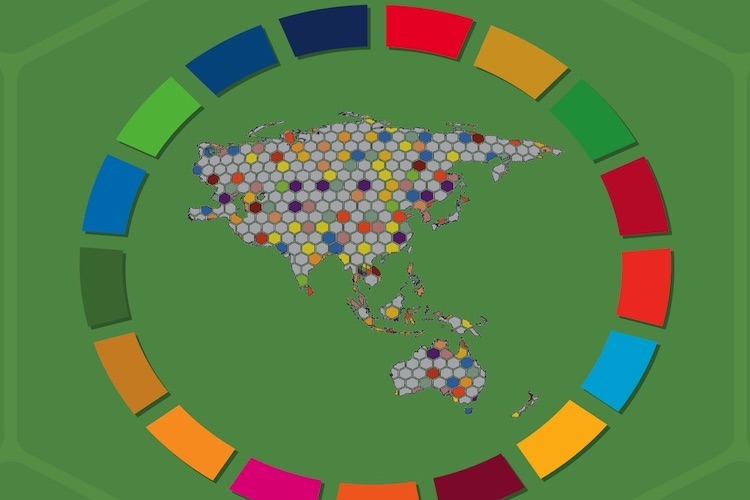By Devinder Kumar
NEW DELHI | BANGKOK (IDN) – United Nations Under-Secretary-General and Executive Secretary of UN Economic and Social Commission for Asia and the Pacific (ESCAP) Armida Salsiah Alisjahbana has welcomed the agreement reached between China and the United States on December 13, defusing tensions in a 19-month trade war. She expects it to “reduce policy uncertainty”.
She further underscored the importance of the multilateral trading system to underpin future trade growth. “For the Asia-Pacific region, the challenge is to increase trade and deepen economic integration to support sustainable development.”
The new guarantees provided by the implementation of the Phase-I deal reached between China and the United States might boost investor and consumer confidence enough for trade in the region to grow by about 1.5 per cent in 2020, the Executive Secretary said. This growth would be felt more in developing economies, which could see a 1.9 per cent and 2.7 per cent growth in exports and imports respectively in 2020. However, country-level forecasts vary widely and uncertainties are high.
The ESCAP Executive Secretary’s remarks come against the backdrop of two new trade briefs, released by the UN regional arm on December 18.
According to the trade briefs, merchandise trade in Asia and the Pacific faced strong headwinds during 2018-2019. Some of the most prominent downside risks and uncertainties are the worldwide economic growth slowdown and the adverse impacts of the United States-China trade war.
These have had an adverse effect on global trade, particularly in the case of economies that are closely integrated with China through Global Value Chains (GVCs).
In 2018, ESCAP estimated that the tariff war-related toll on gross domestic product (GDP) could reach as much as $400 billion worldwide and $117 billion in Asia-Pacific region. Given the current developments, these estimates are not only materializing, but could even increase further as the trade war escalates.
For the first time in the post-2009 crisis period, the Asia-Pacific region registered a dip in both trade volume and value in 2019. Total export volume fell by 2.5%, while import volume did so by 3.5%. In addition, an overall lower price level pushed trade value down further to record 3.6% and 4.8% contractions of exports and imports, respectively.
Looking ahead to 2020, because China and the United States have reached an interim agreement that rolls back some of the tariffs and cancels new ones, there is potential for a modest improvement in the region’s trade performance, says ESCAP. In fact, compared with 2019, exports and imports volume might pick up by 1.5% and 1.4%, respectively. However, country-level forecasts vary widely between a decrease by 2% and an increase by 6.4% for exports.
While it is difficult to fully reverse the trade war’s negative impacts, the before year end bilateral deal between the world’s two largest economies and a deepening integration within Asia-Pacific might boost investor and consumer confidence enough to allow trade to grow modestly.
However, according to ESCAP, it remains highly uncertain whether the trade tensions between China and the United States can be resolved in the near future. Furthermore, the recent decision by India to postpone its participation in signing the Regional Comprehensive Economic Partnership (RCEP) Agreement suggests that not all countries assess the value of accelerating regional integration equally.
The degree to which the trade war affects GVCs is a key in determining longer-term prospects of trade. While other Asia-Pacific economies face risks for their indirect exports to China, new opportunities from the trade war may also arise.
Nevertheless, the extent to which these opportunities can be seized largely depends on the enabling conditions of these countries in attracting redirected GVC-related FDIs from China, states ESCAP.
The trade briefs warn that prolonged trade tensions tend to divert trade and investment from China to some East Asian and ASEAN countries, where business can operate outside tariff-reach, at least for now. However, as the United States becomes increasingly protectionist, other developed economies may encourage their own multinational enterprises (MNEs) to sidestep tariffs by reshoring parts of their manufacturing process.
This process would likely lead to further increased investment in automation and other technological advances at home as high-labour-cost economies strive to reduce costs of operations, says ESCAP.
It expects China to most likely remain the most important GVC hub in Asia, despite the potential realignment of trade routes. China will most likely remain the most important GVC hub in Asia.
China has overseen rapid improvements in service capabilities, workforce skills, digital infrastructure and efficiency in trade facilitation. Investments as well as operations in China remain necessary to accessing the largest and fastest growing market in the most cost-effective and timely manner.
The MNEs serving final demands in China and developed markets, may have to duplicate investment in more than one jurisdiction. This naturally results in higher costs and lower investment returns in GVC operations.
Ultimately, extended trade tensions lead to increased inefficiencies. Consumers eventually have to pay higher prices, and slow trade growth could become a long term trend. [IDN-InDepthNews – 18 December 2019]
Image credit: UNESCAP
IDN is flagship agency of the International Press Syndicate.
facebook.com/IDN.GoingDeeper – twitter.com/InDepthNews

